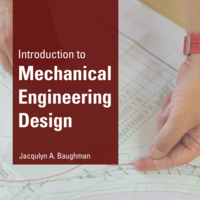Search
Books+
Searching 1,730 books
Search related to the career Aeronautical Engineer
Responsibilities of an Aeronautical Engineer:
1. Designing and Developing Aircraft: Aeronautical engineers are responsible for designing and developing aircraft, including airplanes, helicopters, and spacecraft. They work on various aspects such as aerodynamics, propulsion systems, structures, and control systems.
2. Conducting Research: Aeronautical engineers conduct research to improve aircraft performance, safety, and efficiency. They analyze data, perform simulations, and use advanced software tools to study and optimize aircraft designs.
3. Testing and Evaluation: Aeronautical engineers oversee the testing and evaluation of aircraft prototypes and components. They ensure that the designs meet safety standards, performance requirements, and regulatory guidelines.
4. Collaborating with Teams: Aeronautical engineers work closely with multidisciplinary teams, including mechanical engineers, electrical engineers, and computer scientists. They collaborate to integrate various systems and components into the aircraft design.
5. Ensuring Compliance: Aeronautical engineers ensure compliance with aviation regulations and standards. They stay updated with industry guidelines and work to ensure that aircraft designs meet all necessary requirements.
6. Problem Solving: Aeronautical engineers identify and solve technical problems related to aircraft design, performance, and manufacturing processes. They use analytical skills and engineering principles to find innovative solutions.
7. Project Management: Aeronautical engineers manage projects related to aircraft design and development. They create schedules, allocate resources, and coordinate activities to ensure timely completion of projects.
8. Continuous Learning: Aeronautical engineers stay updated with the latest advancements in aerospace technology, materials, and manufacturing processes. They attend conferences, participate in professional development programs, and engage in lifelong learning.
9. Documentation: Aeronautical engineers create and maintain technical documentation, including design specifications, test reports, and engineering drawings. This documentation ensures proper communication and knowledge transfer within the organization.
10. Quality Assurance: Aeronautical engineers are responsible for ensuring the quality and reliability of aircraft designs. They implement quality control processes, perform inspections, and address any issues that may arise during the manufacturing or testing phases.
11. Environmental Considerations: Aeronautical engineers work towards developing environmentally friendly aircraft designs. They explore ways to reduce fuel consumption, minimize emissions, and improve overall sustainability in the aviation industry.
12. Adhering to Safety Standards: Aeronautical engineers prioritize safety in aircraft design and operation. They assess potential risks, implement safety measures, and ensure that aircraft designs meet stringent safety standards.
13. Customer Support: Aeronautical engineers provide technical support to customers, airlines, and maintenance teams. They assist in troubleshooting issues, addressing customer concerns, and offering guidance on aircraft maintenance and repairs.
14. Continual Improvement: Aeronautical engineers strive for continual improvement in aircraft design and performance. They analyze data from operational aircraft, gather feedback, and propose design modifications to enhance efficiency and reliability.
15. Ethical and Professional Conduct: Aeronautical engineers adhere to ethical and professional standards in their work. They prioritize the well-being of passengers, uphold engineering ethics, and maintain confidentiality of sensitive information.
These responsibilities may vary depending on the specific role, industry, and organization an aeronautical engineer works in.
Source: Various AI tools
Engineering
Books tagged engineering
Searched in English.




























